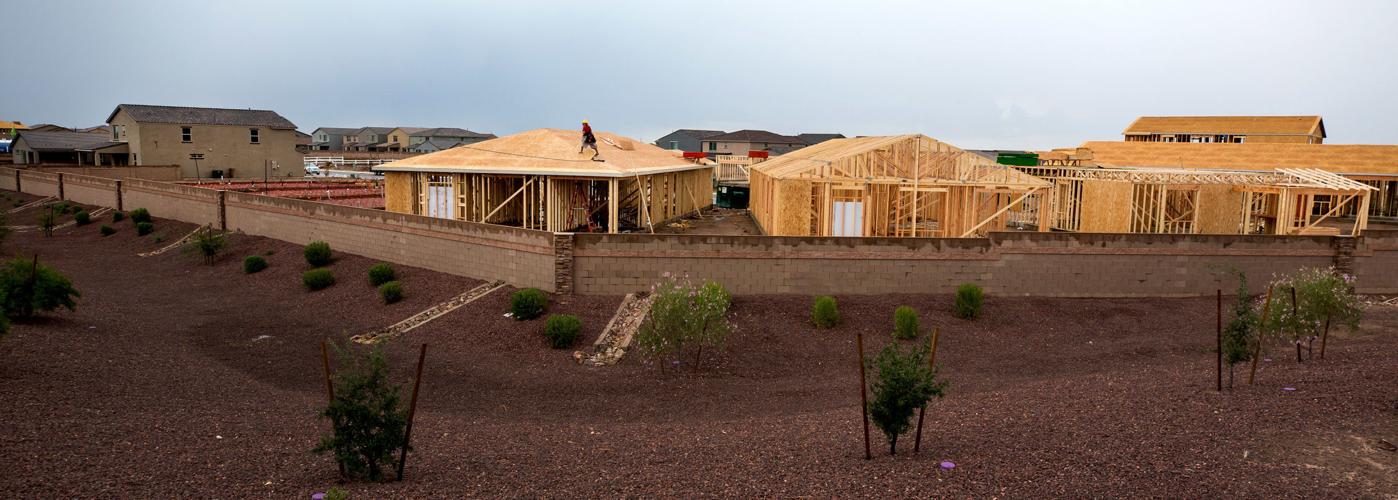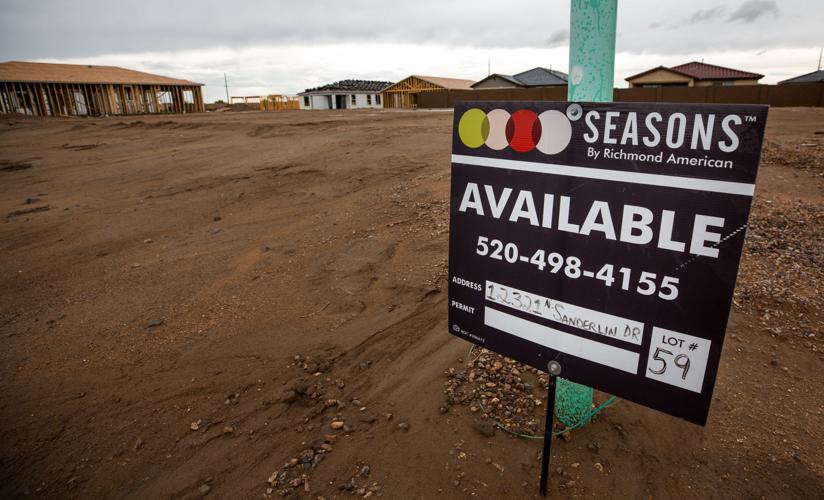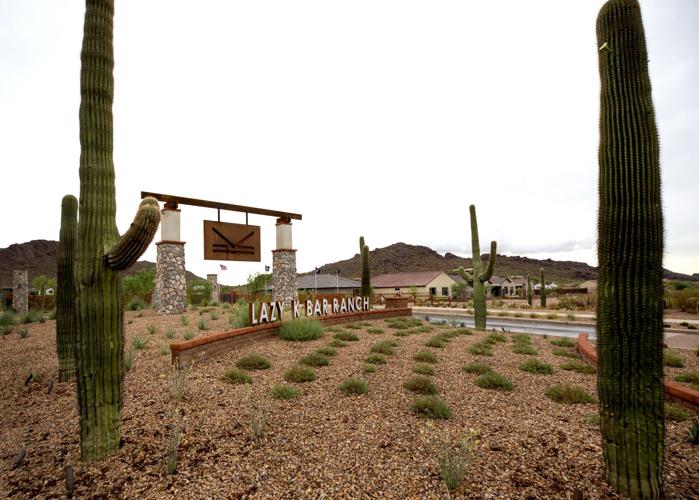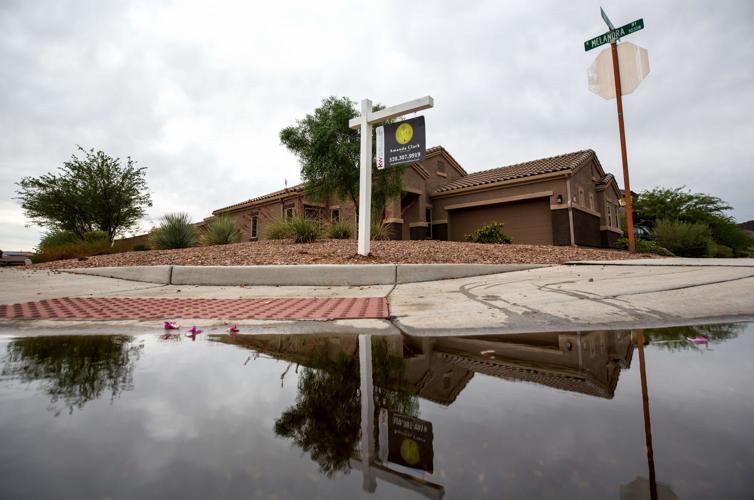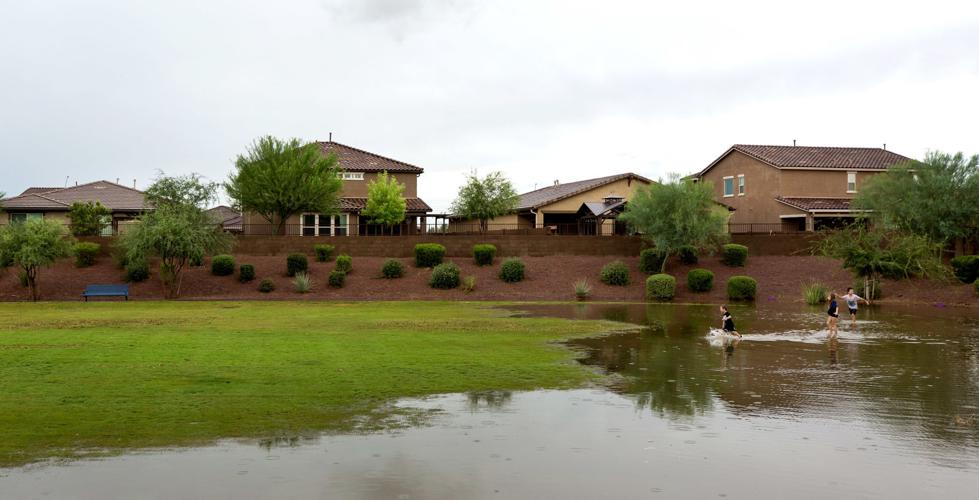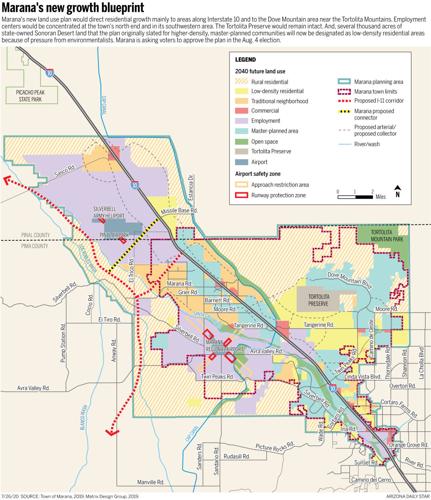As Marana’s population tops 50,000, officials of the booming suburb want voter approval of a new general plan they say balances growth with conservation and inner-city revitalization.
On Aug. 4, Marana voters will decide whether to adopt the new plan. It lays out a densely detailed, 192-page blueprint for how town government services including roads, parks, water and sewers will adapt to a population of 75,000 people by 2040. The town is required by state law to win voter approval of revisions to the plan every decade.
The plan has some environmentally friendly elements. When the Town Council approved it last December, environmentalists won a big victory when the council changed the draft plan to guarantee the existence of the 2,400-acre Tortolita Preserve near the Dove Mountain development for decades to come.
Environmentalists also got the council to sharply limit the intensity of development of thousands of acres of cactus-rich desert in state land surrounding the preserve. The new plan also calls for creating major open-space goals to protect wildlife corridors and riparian areas.
At the same time, the general plan lays out a clear blueprint for continued growth in parts of the town that straddle Interstate 10 for 18 miles from unincorporated Pima County to the Pinal County line. Five areas are earmarked for future growth.
One growth area contains a prime natural area prized by many conservationists — the “Three Rivers” junction of the Santa Cruz and Rillito rivers and the Cañada del Oro Wash.
The map of a planned future road network includes the proposed, multibillion- dollar Interstate 11 freeway running west of the town, which environmentalists bitterly oppose. While the plan talks of the need to protect wildlife corridors, its maps show few or no new wildlife crossings over or under major roadways.
Yet homebuilders also weren’t totally happy with at least the plan’s early drafts. They said, to little effect, that language should have been added to insure that some new regulations would only be adopted “if economically feasible.”
Today, the Coalition for Sonoran Desert Protection and the Southern Arizona Home Builders Association neither support nor oppose the plan.
The general plan calls for expansion of commercial business areas and job centers of office and industrial development. It pushes for various new housing types, to serve a mix of economic backgrounds.
It also calls for expansions of the road network, transit service and bike lanes, bike paths and other bike-friendly facilities. It calls for upgrading the town’s long-moribund downtown area that is just starting to take shape with some new businesses.
It says development needs to pay for itself in supporting construction of roads and other infrastructure to serve the growth. Also, the perennially expanding town must insure that future annexations make economic sense, the plan says.
Pinching pennies during Pandemic
But the plan leaves a big financial question mark.
It calls for officials to prepare 20 smaller plans to translate the general plan’s goals into reality. Besides open space, they include transportation, water and wastewater, downtown revitalization, public safety, trails, stormwater and parks, to name a few.
But when the council adopted its final budget on Tuesday, July 21, for fiscal year 2020-21, $200,000 that had been requested by the town’s staff for at least some of those plans was deep-sixed, along with money for other new programs.
Because COVID-19 has reduced sales-tax revenue, “we’re kind of pinching the pennies to keep our budget in check,” Mayor Ed Honea said.
It will take several years to get all the plans done, said Jason Angell, Marana’s development services director, who says he intends to keep pushing for them.
“A lot of it is play it as you go. If we find our revenues are better or our expenses are lower, we could do some early next year,” Honea said.
Business-friendly reputation
is a lure
Marana’s population soared from barely 5,000 in 1995 to around 35,000 in 2010, U.S. census figures show. The most recent census estimate, from July 2019, placed the town’s population at about 49,000.
Based on new single-family home permits granted in the past year, town officials estimate their population crossed 50,000 in November and now is at 52,000 to 53,000, Angell said.
The town’s reputation as one of Southern Arizona’s most business-friendly communities has lured employers and retailers. Its housing is generally more affordable than in the city of Tucson.
The new general plan’s first sentence notes that Marana and its surroundings are “part of the Sonoran Desert which is characterized by desert flora scrublands and is cut by ephemeral washes and riparian tributaries of the Santa Cruz River.
“Within the Marana town limits is the prominent Tortolita Mountain range which showcases cactus, mesquite, and ironwood forests. The area also has a rich cultural heritage that can trace its history back at least 13,000 years when Paleoindian hunter-gatherers inhabited the area,” the introduction says.
The plan says that today, many are drawn to Marana for its affordable, diverse housing stock and master-planned communities as well as its history and scenery.
The plan’s vision statement calls Marana “a vibrant, active, and diverse town that embraces civic spirit and a unified sense of community. We pride ourselves on having quality neighborhoods and infrastructure that supports sound economic growth.”
Lower density vs. master-planned communities
Last year, the plan’s final draft didn’t even mark the Tortolita Preserve on its map. The preserve lies on state land, operating under a 99-year-lease running out in 2099. The state Land Department had told the town it couldn’t legally call the land a preserve because that incorrectly implies it will stay one forever.
The draft general plan also called for creating a “Special Planning Area” for thousands of surrounding state land acreage to allow for master-planned communities, typically at least three to five homes per acre.
Those and other proposals drew a strong negative reaction, with well over half of the 160 written comments on the draft plan coming from preservation advocates, including the Coalition for Sonoran Desert Protection, the Trust for Public Land, the Tucson Mountains Association and the Tortolita Alliance.
The Town Council agreed to put the preserve into the general plan, and to plan the other state land for low-density housing. But the council also upped the meaning of low density from a range of 0.5 to 1 home per acre to 1 to 2 homes per acre.
Still, Carolyn Campbell, director of the Coalition for Sonoran Desert Protection, said those elements in the plan represented a big win. She said she was “really disappointed,” however, about the money for follow-up plans disappearing from the town budget.
“There were some things we didn’t get, but we basically got many important things in the general plan. It was better than the existing one,” Campbell said. Environmentalists have long said Marana took an “anything goes” attitude toward growth.
The Marana council also did little to ease a long list of concerns from Pima County officials.
In a letter to the town last year, the county’s Office of Conservation and Sustainability said the plan contains no mention of climate change, climate mitigation or climate adaptation. It does not have plans to reduce Marana’s greenhouse-gas emissions.
The plan contains few or no objectives or goals, or implementation strategies toward sustainability, the letter said.
While the plan says the Sonoran Desert contains critical wildlife habitat needing protection and that it’s important to ease development’s impacts on riparian areas, “there is no explanation on how, or even if, the Town of Marana will protect them,” the letter said.
Debate over climate change responses
In response, Angell said the details the county is looking for will be developed when the follow-up plans are done later, as will issues like wildlife corridors.
While Interstate 11 is controversial, it’s also a planned corridor, recognized by the state and federal governments, he said.
As for climate change, he noted that the county’s concerns came up very late in the game, toward the end of a public comment period that preceded the final council vote.
Climate change has little relevance to the general plan’s goals of showing what properties’ zoning is, where drainage exists and where proposed transportation corridors lie, Honea said.
“We’re not going to play the climate-change game. It’s really a political game anyway,” the mayor said. “The thing about climate change is that it’s not actual concrete, it’s not a road, it’s not a drainage canal, it’s not a park. It’s just a statement that climate change could be affected by whatever.”
Campbell said in reply that how the town develops affects the climate, in part because continued sprawl of the kind occurring in Marana requires burning more fossil fuels to drive farther.
“Transportation obviously is a huge nexus to climate change — the biggest contributor. A new freeway definitely means more automobiles,” she said.
“Price-sensitive” housing options
As for the homebuilders, they got some victories, too. The town amended its drafts of the general plan to spell out, for instance, “price-sensitive” housing options in response to the Southern Arizona Home Builders Association’s concerns.
A proposal for a design review board was killed, and town officials noted that the plan’s policies are intended to provide options for architectural designs, not to mandate any one design.
As for the state land issue, SAHBA director David Godlewski said he was concerned but not alarmed that the town clamped down on development of it.
“For decades, our region has balanced environmental protection and continued growth. These things are not mutually exclusive. In order to continue in this direction, sound long-range planning tools are needed,” Godlewski said.
“If restrictions are placed on land use that limit development flexibility, we miss out on building communities that provide safe, quality and affordable housing for future families.”
He added, “It’s tough to tell how it’s going to play out.”


